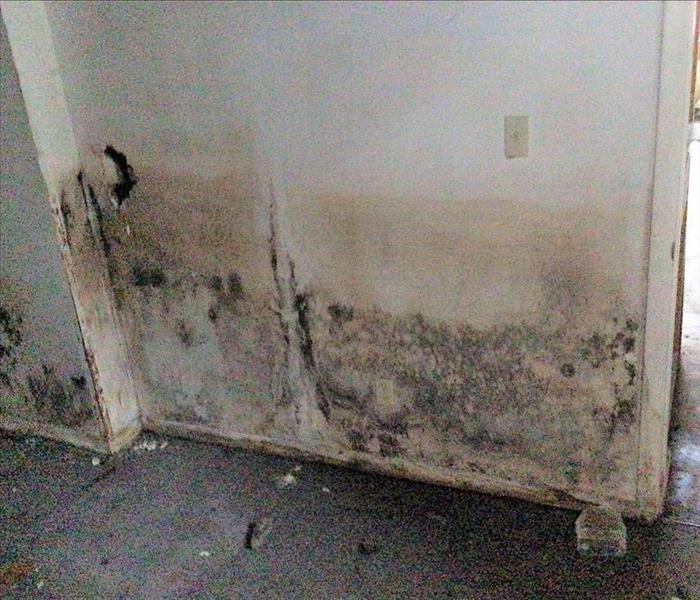How to Prevent Mold After a Flood
5/27/2022 (Permalink)
A flood in your home or business creates nothing short of panic. It will get you running for the mop, towels, and wet/dry vacuum. Now that the standing water is under control, you will need to focus on mold prevention. Mold growth is an issue that needs to be addressed within 48 hours. Here are four ways to prevent mold after a flood.
- Remove Standing Water
A wet/dry vacuum can be your best friend. Safely removing water quickly is best to minimize potential damage. If you don’t already own one, it would be a wise investment.
- Remove Carpet
It’s very hard to dry carpet completely because the padding underneath isn’t exposed to the air. The water itself can damage your subfloor, and mold will grow within and under the carpet and pad.
- Remove Drywall
Drywall is often overlooked when a flood occurs because the focus tends to be on the floor. As water will spread along the wall it will start to wick up the baseboards and onto the drywall. Mold growth can occur within the wall cavity if that space isn’t dried properly, which usually means cutting out a portion of the affected wall.
- Remove Humidity
Moisture can seep into tiny crevices, making it difficult to dry everything completely. Mold and bacteria will be trapped in places that you’re probably not equipped to reach and don’t even think about. Humidity will be high after a flood happens, so being able to control that humidity with a dehumidifier can help the drying process.
When your home or business has flooded, start mitigation as quickly as possible to minimize damage and prevent mold growth. With the above tips, you can be sure to get your home back to normal in no time.





 24/7 Emergency Service
24/7 Emergency Service
